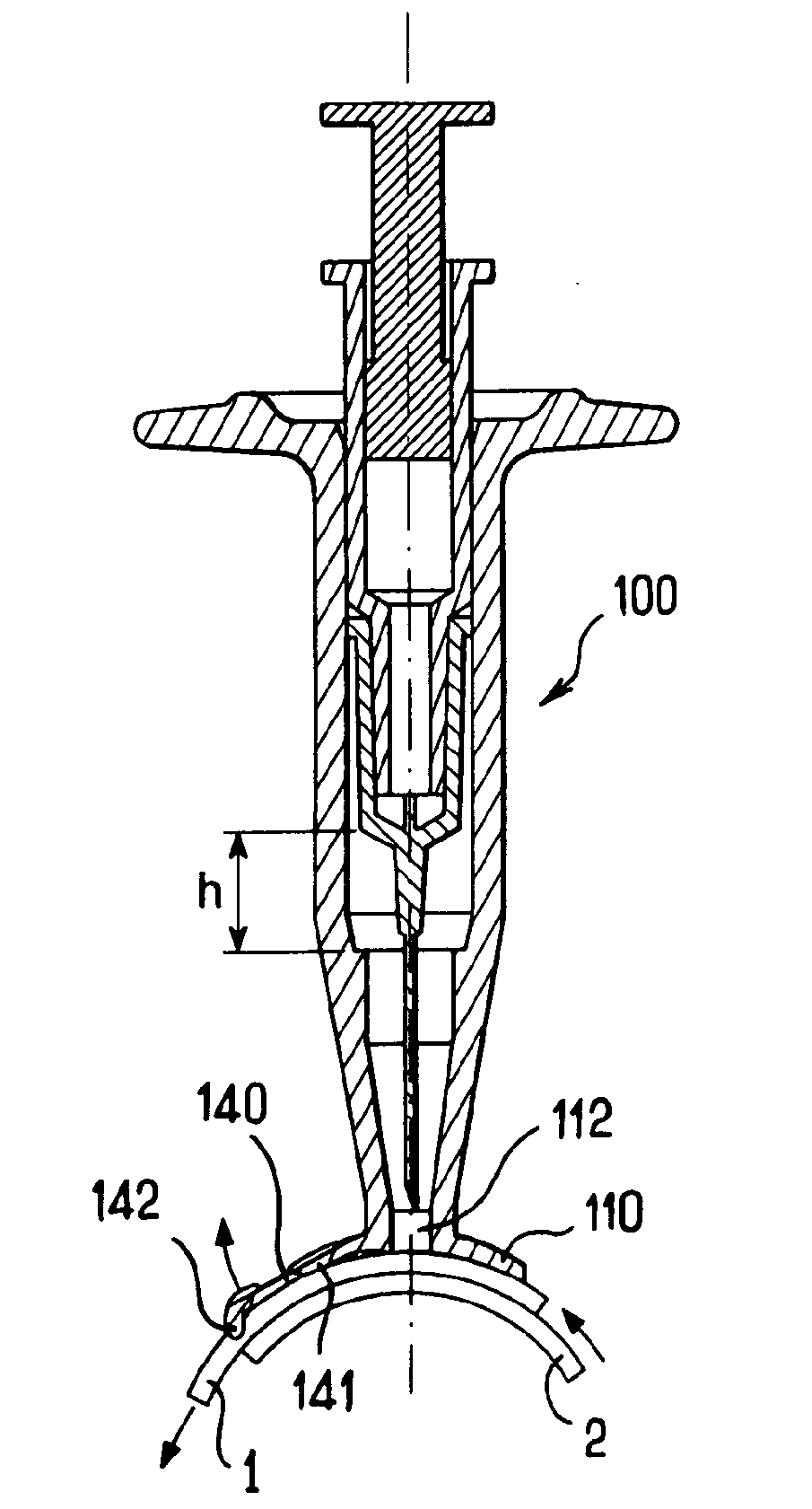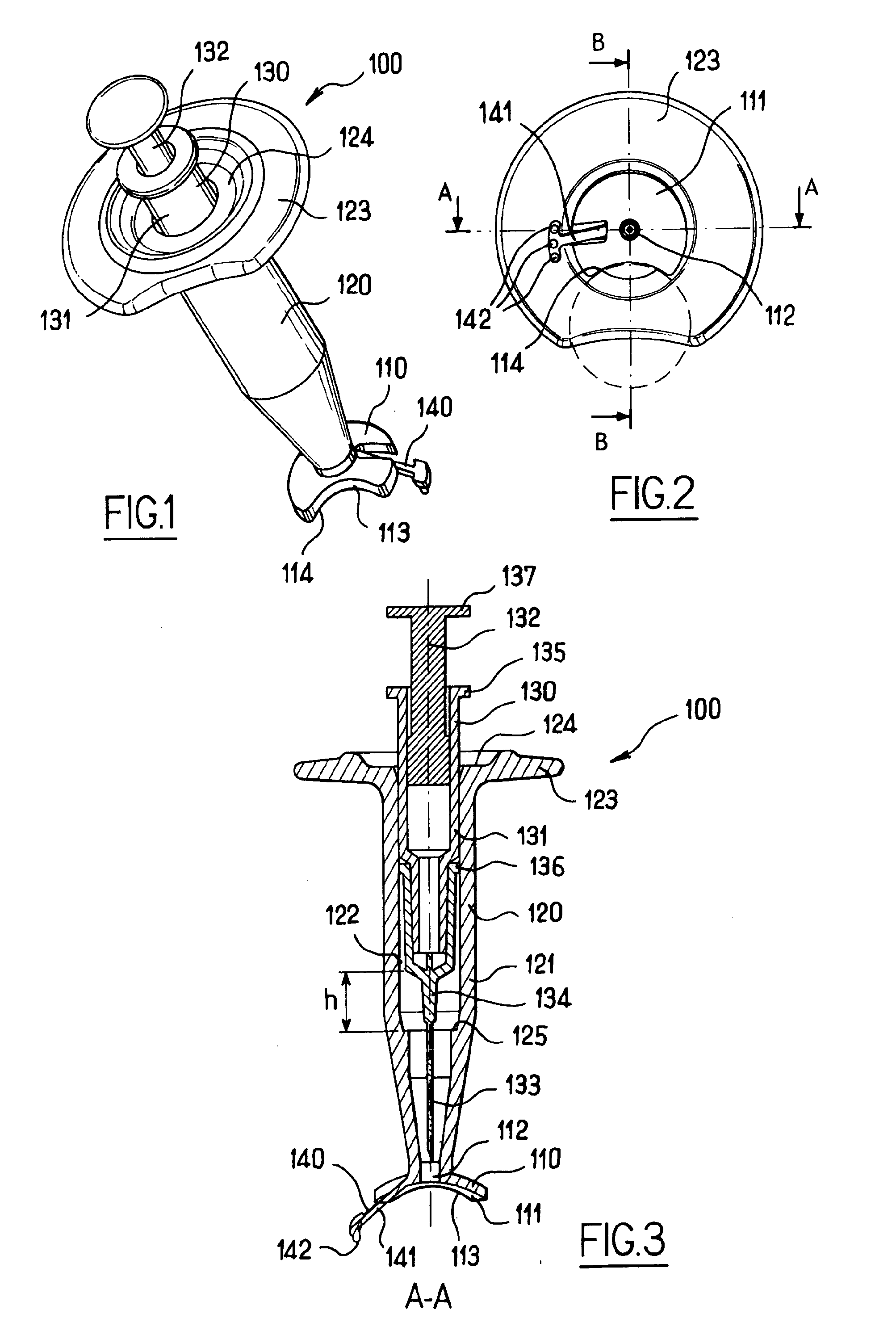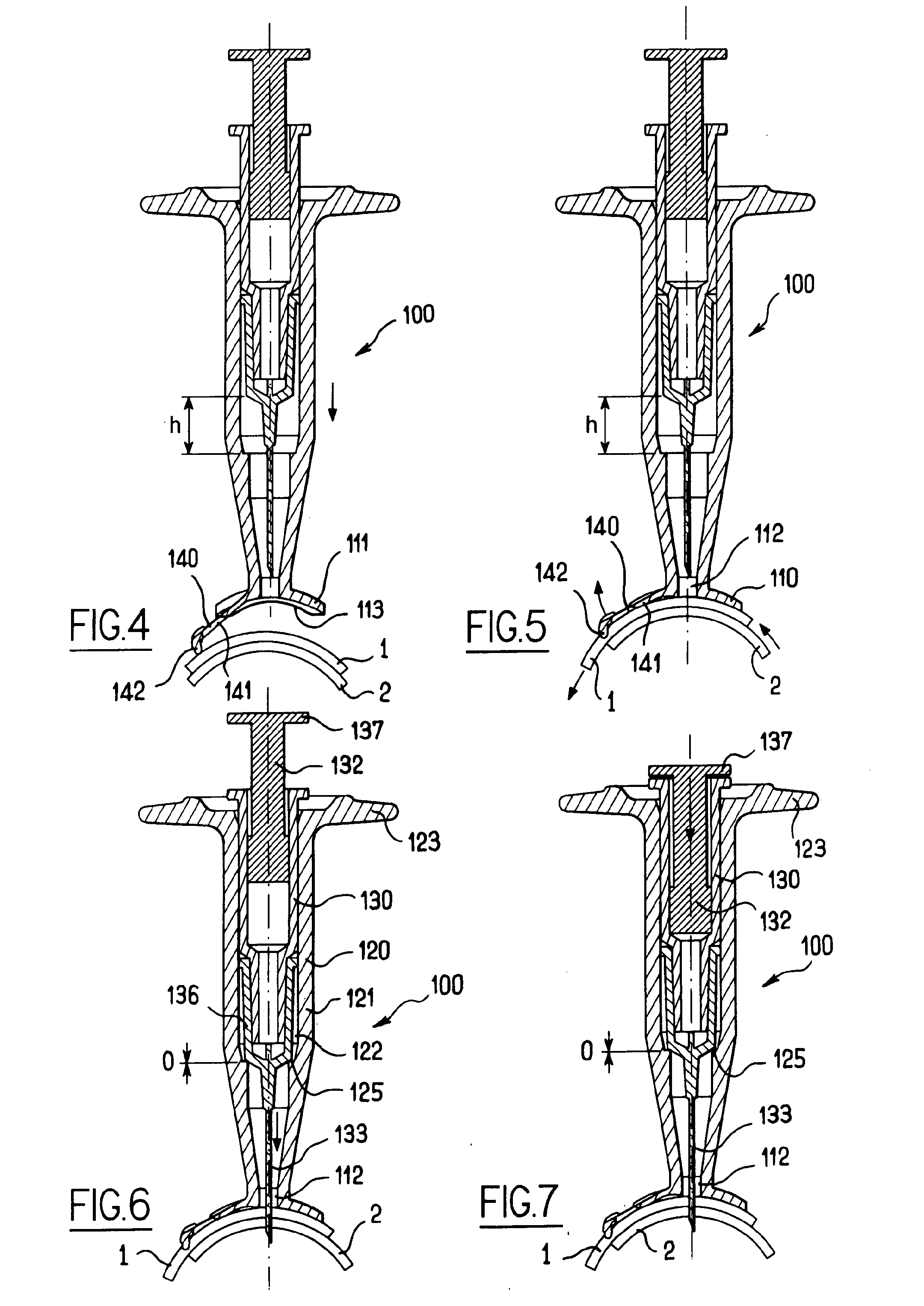Apparatus for intra-ocular injection
a technology for intraocular injection and apparatus, which is applied in the field of apparatus for intraocular injection, can solve the problems of undesired systemic toxicities, inability to achieve or maintain adequate levels of drugs through oral or parenteral administration, and inability to provide effective levels of drugs specifically to the eye, etc., and achieve the effect of precise positioning of guiding means
- Summary
- Abstract
- Description
- Claims
- Application Information
AI Technical Summary
Benefits of technology
Problems solved by technology
Method used
Image
Examples
first embodiment
[0050]FIGS. 1 to 3 illustrate an apparatus 100 for intra-ocular injection according to the invention. The apparatus 100 comprises a plate 110 adapted for being brought into contact with an eye, a support 120 for receiving a syringe and optionally a syringe 130. The plate 110 has an eye bearing surface 111 having a curved shape for matingly bearing on the outer surface of the eye and an aperture 112 provided in the plate 110 for allowing a needle to pass through the plate 110.
[0051]Moreover, the plate 110 has a cut-out 113 having an edge 114 with a curved shape. More precisely, the edge of the cut-out has a substantially circular shape which corresponds to a shape of a limbus (as shown in dofted line on FIG. 2) so that the edge 114 can be superimposed on the limbus. The cut-out 113 has a diameter of about 12 millimetres. The cut-out serves as a reference for precisely positioning the apparatus with respect to the eye in order to perform an intra-ocular injection. The cut-out 113 is p...
second embodiment
[0068]FIGS. 10 to 13 illustrate an apparatus 200 for intra-ocular injection according to the invention. The apparatus 200 is similar to the apparatus 100, except that it comprises releasable connecting means 250 for connecting the syringe plunger and the syringe barrel. The apparatus 200 comprises a plate 210, a support 220 and a syringe 230. The plate 210 has an eye bearing surface 211, an aperture 212 and a cut-out 213 having an edge 214.
[0069]The support 220 comprises a hollow body 221 extending over the aperture 212 and comprising an inner guiding channel 222 adapted for receiving the syringe 230 in such a way that the syringe 230 can slide into the guiding channel 222. The support 220 comprises an annular flange 223 which projects outwardly from the body 221, in a radial direction relative to the axis of the guiding channel 222. The annular flange 223 allows an operator to retain the support when sliding the syringe 230 relative to the body 221. The support 220 also comprises a...
third embodiment
[0077]FIGS. 16 to 22 illustrate an apparatus 300 for intra-ocular injection according to the invention. The apparatus 300 is similar to the apparatus 200, except that it comprises a carpule and a removable safety ring for preventing movement of the needle relative to the body. The apparatus 300 comprises a plate 310, a support 320 and a syringe 330. The plate 310 has an eye bearing surface 311, an aperture 312 and a cut-out 313 having an edge 314.
[0078]The support 320 comprises a hollow body 321 extending over the aperture 312 and comprising an inner guiding channel 322 adapted for receiving the syringe 330 in such a way that the syringe 330 can slide into the guiding channel 322. The support 320 comprises an annular flange 323 which projects outwardly from the body 321, in a radial direction relative to the axis of the guiding channel 322. The annular flange 323 allows an operator to retain the support when sliding the syringe 330 relative to the body 321. The support 320 also comp...
PUM
 Login to View More
Login to View More Abstract
Description
Claims
Application Information
 Login to View More
Login to View More - R&D
- Intellectual Property
- Life Sciences
- Materials
- Tech Scout
- Unparalleled Data Quality
- Higher Quality Content
- 60% Fewer Hallucinations
Browse by: Latest US Patents, China's latest patents, Technical Efficacy Thesaurus, Application Domain, Technology Topic, Popular Technical Reports.
© 2025 PatSnap. All rights reserved.Legal|Privacy policy|Modern Slavery Act Transparency Statement|Sitemap|About US| Contact US: help@patsnap.com



